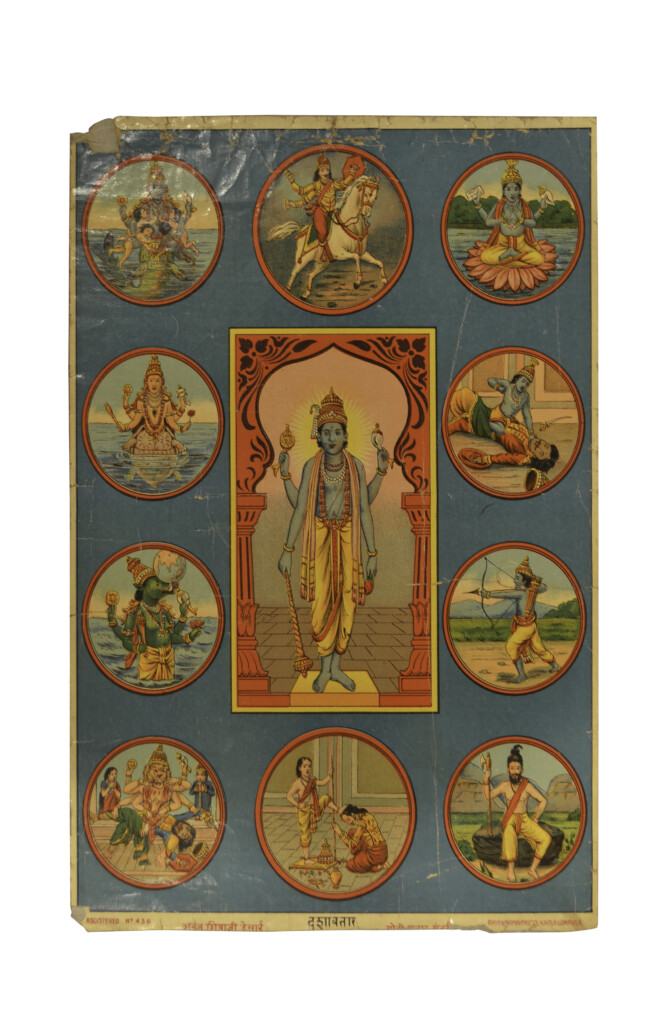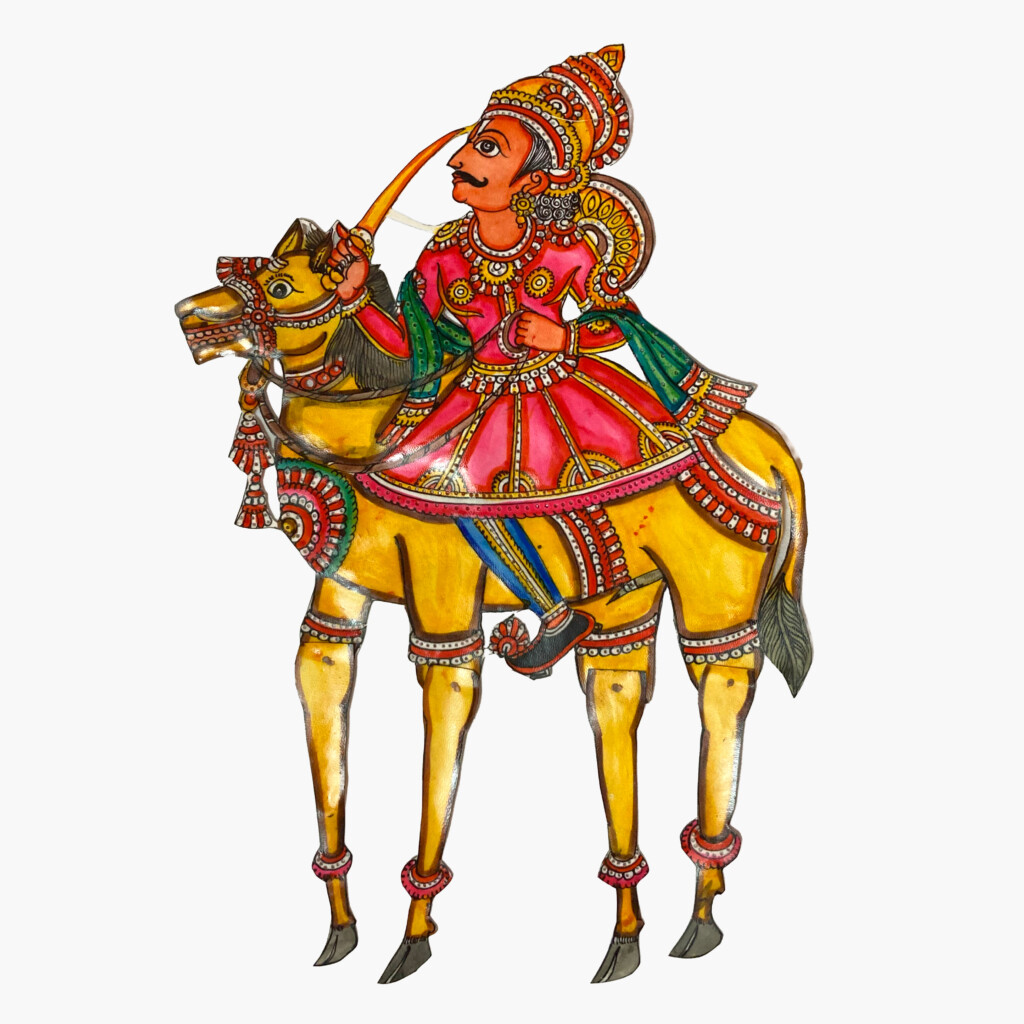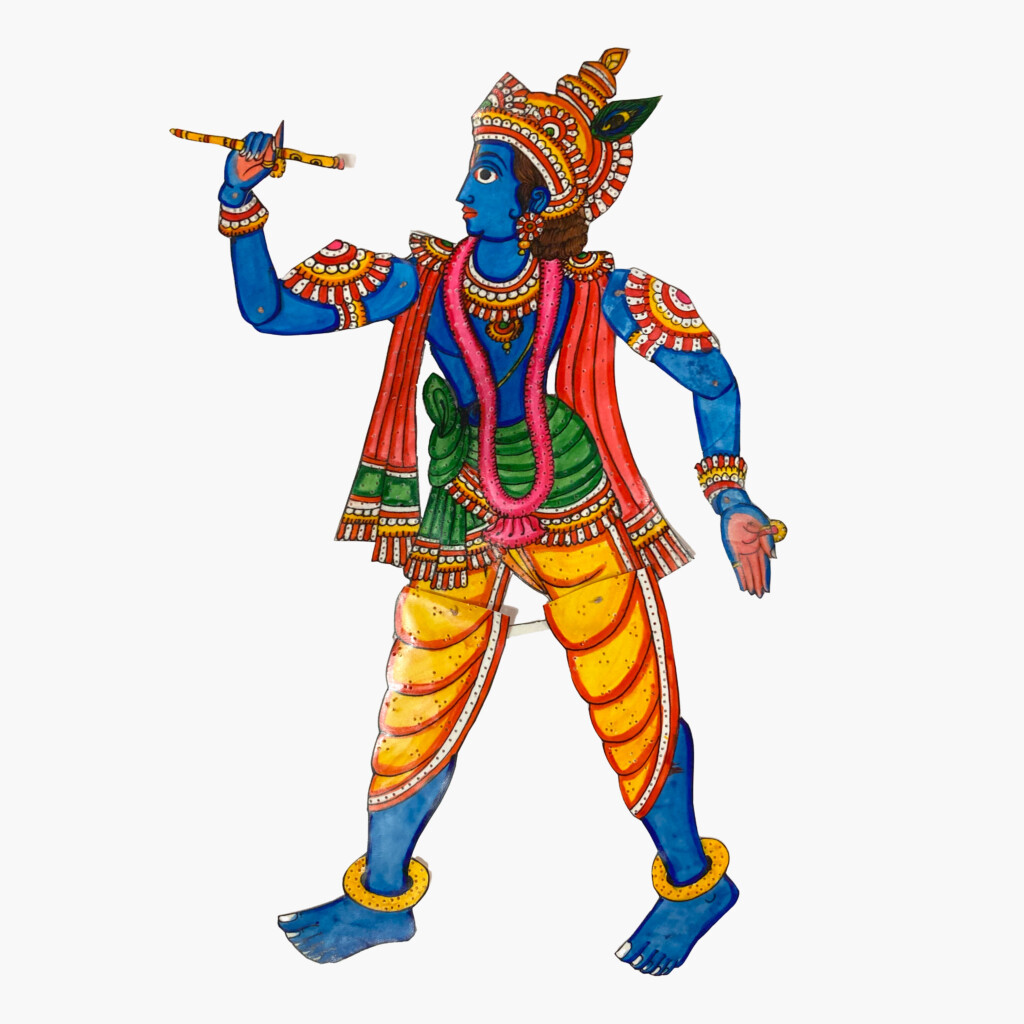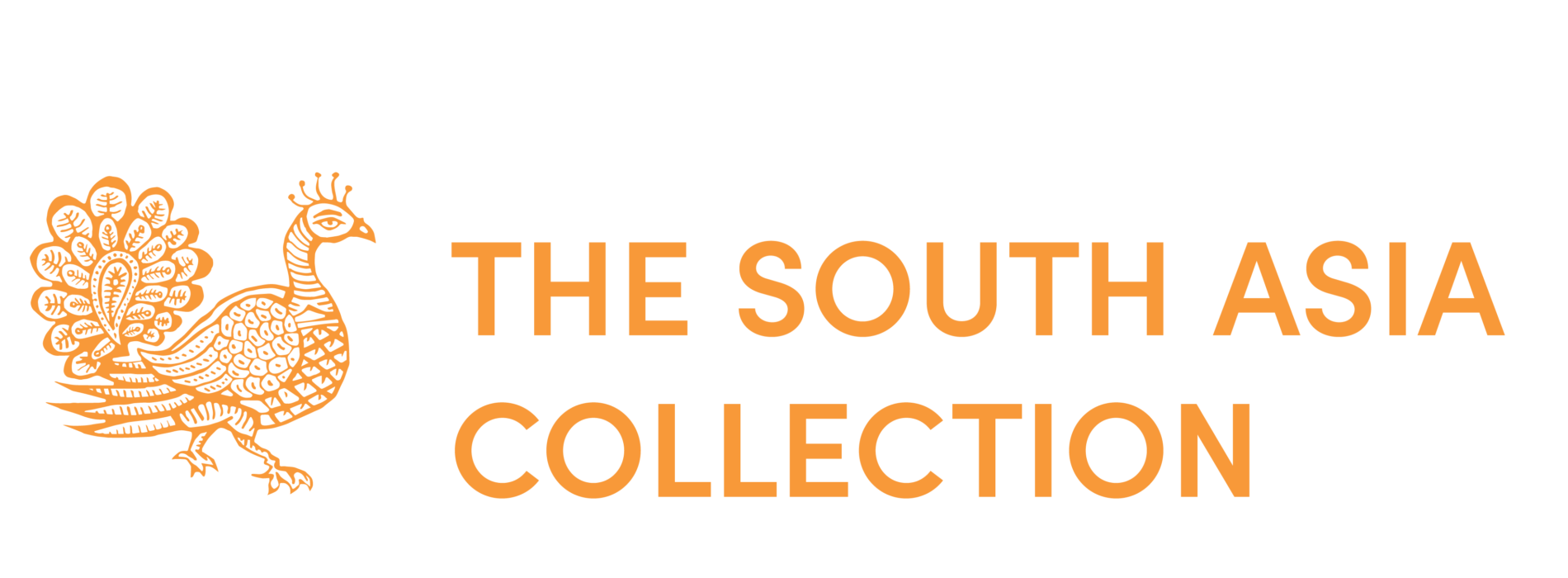In Hinduism, Vishnu is one of the three principal deities known collectively as the Trimurti, which includes Brahma the creator, Vishnu the preserver, and Shiva the destroyer of the universe. Vishnu is one of the most widely worshipped deities in Hinduism.
In artistic representations, Vishnu is commonly depicted in human form with blue skin. He has four hands. In the upper left hand, he holds the shankha (conch shell) that produces the sound Om, believed to be the sound of creation. In his upper right hand, he holds the sudarshana chakra (discus) that represents the power to destroy evil and ignorance. In the lower left hand, he holds a padma (lotus flower) symbolising purity and in the lower right hand he holds the kaumodaki or gada (mace or club) representing physical strength.
Vishnu is believed to have incarnated in ten distinct forms, known as avatars (incarnations), in different yugas (the cycle of time in Hindu cosmology) to restore balance and protect the Earth during times of crisis. This group of ten avatars is referred to as the Dashavatara.
The stories and depictions of these ten avatars are represented in a wide range of art forms and living traditions throughout India. This display presents some such examples from The South Asia Collection. The interpretation text is intended as a starting point for all of us to learn more about Vishnu and his ten avatars and is only a brief glimpse into the diverse narratives associated with each of the avatars.




